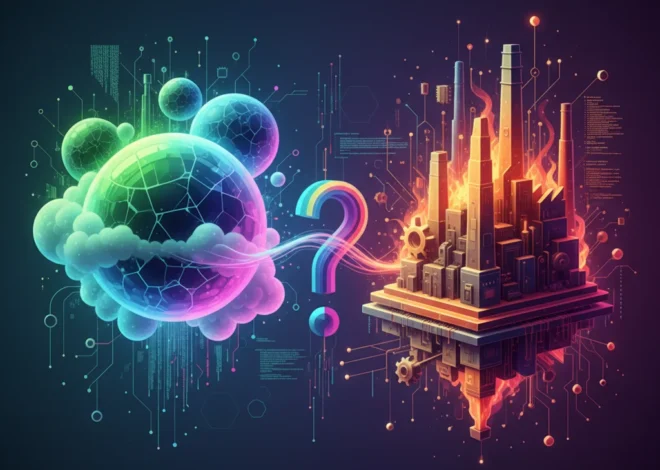
The Trillion-Dollar Handshakes: How Samsung is Building the Grand Alliance of AI
In the high-stakes world of artificial intelligence, the biggest moves aren’t always made in code repositories or research labs. Sometimes, they happen in quiet, closed-door meetings between the most powerful people on the planet. Recently, Samsung’s executive chairman, Lee Jae-yong, embarked on what can only be described as a global “charm offensive,” meeting with a trinity of titans who are shaping our technological future: Nvidia’s Jensen Huang, OpenAI’s Sam Altman, and Indian billionaire Mukesh Ambani.
These weren’t just polite photo-ops. These were strategic summits that could very well draw the blueprint for the next decade of innovation in artificial intelligence. This is a story about silicon, software, and scale. It’s about forging an alliance that could dominate everything from the microscopic transistors in a GPU to the cloud infrastructure serving billions of users. Let’s break down these power meetings and analyze what this emerging super-coalition means for developers, entrepreneurs, and the entire tech industry.
Part 1: The Silicon King and the AI Visionary (Samsung & Nvidia)
The engine of the current AI boom is, without a doubt, Nvidia. Their GPUs, like the H100 and the new Blackwell B200, are the undisputed workhorses for training and running large language models. But even a king has a vulnerability. For Nvidia, the bottleneck is a highly specialized component: High-Bandwidth Memory (HBM).
Think of HBM as a super-fast, multi-lane highway for data that sits right next to the GPU’s processor. As AI models get larger and more complex, they need to shuttle massive amounts of data in and out of memory instantly. Standard memory is too slow; it would be like forcing a Formula 1 car to drive through city traffic. HBM is the racetrack, and Samsung is one of the world’s premier racetrack builders.
Lee Jae-yong’s meeting with Jensen Huang was about one thing: securing the future of this critical supply chain. Nvidia needs a rock-solid, high-volume supply of the latest HBM3 and HBM3e chips to meet the insatiable demand for its AI accelerators. According to the Financial Times, this meeting was a top priority for Lee, signaling the immense strategic importance of their partnership. For Samsung, being the preferred HBM supplier for Nvidia isn’t just a lucrative contract; it’s a coronation, placing them at the very heart of the AI hardware revolution.
This collaboration is a perfect example of symbiotic innovation. Nvidia designs the world’s most powerful AI brains, and Samsung builds the nervous system that allows those brains to think at lightning speed. Without Samsung’s memory innovation, Nvidia’s roadmap slows down. Without Nvidia’s demand, Samsung’s massive investment in HBM production doesn’t have a primary customer. Together, they form the foundational layer of modern machine learning infrastructure.
The £4 Million Tweet: Deconstructing the Twitter Hack and the New Era of AI-Driven Cybersecurity
Part 2: The Hardware Giant and the Software Prophet (Samsung & OpenAI)
If Nvidia represents the current AI hardware paradigm, OpenAI represents its future. Sam Altman, CEO of OpenAI, has been very public about his biggest concern: the coming shortage of AI computing power. He understands that the progress of models like GPT-5 and beyond is not limited by ideas, but by the sheer availability of specialized silicon to train and run them.
Altman is reportedly seeking to raise trillions of dollars to reshape the global semiconductor industry, a move that would ensure OpenAI has the computational power it needs. His meeting with Lee Jae-yong fits perfectly into this audacious vision. This conversation likely went far beyond a simple customer-supplier relationship. They were probably discussing the future of AI chips themselves. Could Samsung’s vast foundry and memory manufacturing capabilities be leveraged to create custom-designed chips specifically for OpenAI’s future models? It’s a tantalizing possibility.
This potential partnership could disrupt the entire industry. It signals a move by major AI labs to vertically integrate, or at least form deep, exclusive alliances with hardware makers. For startups and developers, this could mean a future where AI development isn’t just about programming and algorithms, but about co-designing software and hardware from the ground up. This convergence is where the next leap in AI performance will come from. Samsung, with its ability to manufacture both logic chips and memory, is one of the only companies in the world that can make such a holistic vision a reality.
Part 3: Unlocking a Billion Users (Samsung & Reliance)
Having the best hardware and the smartest software is useless if you can’t get it into the hands of users. This is where the third, and perhaps most crucial, meeting comes in: Lee Jae-yong’s sit-down with Mukesh Ambani, the chairman of Reliance Industries.
Ambani isn’t just a billionaire; he is the architect of India’s digital revolution. His company, Reliance Jio, has brought affordable, high-speed internet to hundreds of millions of people, creating one of the largest and most vibrant digital ecosystems on Earth. A partnership with Reliance is the ultimate key to unlocking the Indian market, a population of 1.4 billion people who are rapidly adopting new technologies. A report from India’s Internet and Mobile Association projects the country will have over 900 million internet users by 2025.
The synergy here is immense. Samsung makes the devices—from flagship smartphones to everyday appliances. Reliance provides the network—the 5G pipes to deliver AI-powered services. Imagine Samsung’s next Galaxy phone, powered by a custom AI chip, running localized generative AI models, and distributed through Jio’s massive retail and digital network. This is about deploying AI at a population scale, creating services for everything from agriculture and healthcare to education and entertainment, all tailored for the Indian consumer.
To better understand the players and their strategic goals, consider this breakdown:
| Leader & Company | Core Asset | Strategic Goal in the Alliance |
|---|---|---|
| Lee Jae-yong (Samsung) | Advanced Semiconductor & Memory Manufacturing | Become the central, indispensable hardware hub for the entire AI ecosystem. |
| Jensen Huang (Nvidia) | Dominant AI GPUs & Software (CUDA) | Secure the HBM supply chain to maintain and extend its market leadership. |
| Sam Altman (OpenAI) | Leading Generative AI Models (GPT series) | Secure a massive, long-term supply of AI chips for next-gen models. |
| Mukesh Ambani (Reliance) | India’s Largest Telecom & Digital Ecosystem (Jio) | Bring cutting-edge AI devices and services to over a billion potential users. |
This final piece of the puzzle transforms the alliance from a B2B hardware play into a global, consumer-facing AI powerhouse.
The UK's Risky Gamble: Will Banning Ransomware Payments Save Us or Sink Us?
The Grand Vision: Building the Full-Stack AI Behemoth
When you connect the dots between these three meetings, a breathtaking picture emerges. This isn’t a series of unrelated business trips. It’s the deliberate construction of a global, full-stack AI alliance.
- Layer 1: The Silicon Foundation. Samsung provides the memory, and potentially the custom logic chips, that are the physical basis of intelligence.
- Layer 2: The Processing Engine. Nvidia provides the powerful GPUs that train and run the models, forming the computational heart.
- Layer 3: The Intelligence Layer. OpenAI creates the sophisticated machine learning models and SaaS platforms that deliver AI’s capabilities.
- Layer 4: The Distribution Network. Reliance Jio provides the market access and network infrastructure to deploy these capabilities to a billion people.
This integrated stack presents both immense opportunities and significant challenges. For developers and startups, building on a tightly integrated platform could lead to unprecedented performance and efficiency. Imagine developing an application where the software is optimized for the specific AI model, which in turn is optimized for the custom chip it runs on. This level of automation and integration could spark a new wave of innovation.
However, it also raises questions about market concentration and competition. The formation of such a powerful bloc could make it harder for independent hardware and software players to compete. Furthermore, the immense amount of data and infrastructure controlled by this alliance would make cybersecurity a paramount concern. The integrity of this stack, from the foundry to the end-user, would need to be unassailable.
Conclusion: The Dawn of a New Tech Order
Lee Jae-yong’s “billionaire charm offensive” is far more than a diplomatic tour. It’s a calculated and audacious bid to position Samsung as the linchpin in the future of artificial intelligence. By forging deep ties with the leaders of AI hardware, software, and market access, he is building a formidable alliance that could define the technological landscape for years to come. The meetings may have been private, but their implications are public and profound.
The race to achieve Artificial General Intelligence (AGI) and deploy AI at scale is not a sprint; it’s a global marathon that requires unprecedented collaboration. These handshakes may one day be seen as the moment the starting gun was fired on a new era of integrated, global AI development. The future of technology is being built today, not in a garage, but in the boardrooms of the world’s most powerful companies.
The AI Elephant in the Room: Why Google's CEO Is Warning You to Be Skeptical


